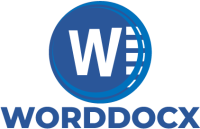Golang, or Go, is a programming language designed by Google. It is a statically typed, compiled language that runs on the JVM and supports garbage collection. Golang is designed to be simple, efficient, and portable. Its syntax is clean and easy to read, making it a great choice for beginners. Additionally, its compiler is very fast, making it ideal for large projects. Golang also has some unique features, such as its lightweight concurrency model and first-class support for dependency management. These features make Golang an attractive choice for many developers.
How to get started with Golang programming
If you’re looking to get started with the Golang programming language, there are a few things you’ll need to do first. First, you’ll need to download and install the Go tools. These can be found on the official Go website (golang.org). Once you have the Go tools installed, you’ll need to create a workspace. This is simply a directory where your Go code will reside. Once you have a workspace set up, you’ll need to decide which code editor or IDE you want to use. There are many different options available, so take some time to try out a few and see which one suits your needs best. Finally, you’ll need to write some code! Start by following one of the many Golang tutorials available online. Once you have a basic understanding of the language, you can begin working on your own projects. With a little effort, you’ll be writing Golang code in no time.
Tips for writing efficient and effective Golang code
awkward sentence structure, choppy writing
Golang is a programming language created at Google. It is open source and has many benefits compared to other languages, such as being lightweight and having great memory management. Golang is also said to be very efficient in terms of run time and code size. Here are some tips for writing efficient and effective Golang code:
– When possible, use the ‘blank identifier’ to avoid creating unnecessary variables.
– Use pointers when you want to change the value of a variable inside a function.
– Make use of Go’s concurrent features to improve efficiency.
– Use the ‘defer’ keyword to ensure that cleanup code is always executed.
– Understand how garbage collection works in Go in order to avoid memory leaks.
following these tips should help you write more efficient and effective Golang code.
Best practices for working with Go libraries and frameworks
Go is a programming language with a rich set of libraries and frameworks. While these can be extremely useful for developing applications, it is important to follow some best practices when working with them. First, always check the documentation to see if there are any specific instructions for using the library or framework. Second, make sure to keep all dependencies up to date. Third, be aware of potential compatibility issues between different libraries and frameworks. Finally, always test your code thoroughly before deploying it to production. By following these best practices, you can avoid many common problems when working with Go libraries and frameworks.
Resources for further learning about Golang development
If you’re interested in learning more about Golang development, there are a number of resources available online just like Golang training. The Golang website includes a comprehensive language specification, as well as tutorials and code examples. In addition, there are a number of online forums where Golang developers can ask questions and share advice. Finally, there are a number of Golang books available, both for beginners and more experienced developers. With so many resources available, there’s no excuse not to start learning Golang today.
Conclusion
Golang is a powerful programming language that offers many benefits over other languages. If you’re interested in learning how to program with Go, our guide provides everything you need to get started. We’ll walk you through setting up your development environment, writing your first programs, and best practices for coding efficiency and effectiveness. Plus, we’ve included some helpful resources for further learning about Golang development. So what are you waiting for? Start coding with Go today!

